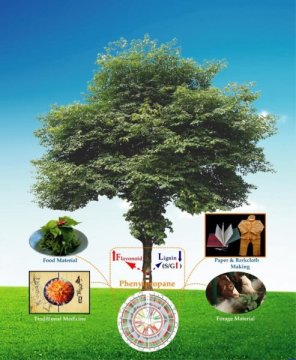[ad_1]
The paper mulberry evolved its uniquely fibrous inner bark around 31 million years ago, long before the woody tree was first used for bookmaking during China’s Tang dynasty. This adaptation, which makes the nutrient-rich plant easy to pass through foraging animals, may have been its way of feeding nearby soil microbes. Botanists in China discovered this connection in the first analysis of the Broussonetia papyrifera genome, published February 26 in the journal Molecular Plant.
Using comparative genetics, the research team also found that the paper mulberry tree developed a complex set of flavonoids. These compounds, commonly used in Chinese traditional medicine, can help a plant’s roots attract nitrogen-fixing bacteria such as Pseudomonas and Rhizobia, which in turn promote leave and stem growth (a tactic commonly used by legumes), and enhance the paper mulberry’s ability to adapt to a wide range of environments.
“The unique traits of paper mulberry are consistent with the ancient Chinese philosophy of mutual promotion and restraint, suggesting that paper mulberry is a very complex and remarkable tree species,” write the authors, led by botanist Shihua Shen of the Key Laboratory of Plant Resources, Chinese Academy of Sciences. “Both humans and livestock can benefit from the symbiosis of paper mulberry and microbes.”
The paper mulberry tree, which has over 30,000 genes, is native to Asia and has a long history of application. The bark of paper mulberry is the main raw material of Cai Lun papermaking, one of the four great inventions in ancient China. The tree’s leaves are the raw materials for high-quality protein feed. And thanks to being rich in flavonoids, the paper mulberry forms relationships with various beneficial soil bacteria.
“The paper mulberry is a very important multi-purpose resource plant,” says Shen. “However, the lack of systematic research and artificial domestication hinder the development and utilization of plant, which is far behind other economic crops. We hope that this study will promote the breeding of new paper mulberry strains with higher yield and high quality.”
The research team plans to continue investigating the molecular mechanisms that lead to economically important traits such as pulping, papermaking, and the creation of feedstock, medicine, and food.
Story Source:
Materials provided by Cell Press. Note: Content may be edited for style and length.
[ad_2]















